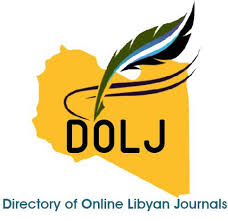Estimation of maternal and fetal morbidity in high order cesarean section in Zawia
DOI:
https://doi.org/10.54361/ljmr.v8i1.01Abstract
To assess the maternal and neonatal risk associated with high order cesarean sections, a prospective study was carried out in Zawia hospital, maternity wards. The patient was interviewed in the labor word and performed case sheet filled with specific data. The outcome of 458 cases, 218 women undergoing cesarean section for the third time or more was compared with 240 women sectioned for the second time (P1c/s), the outcome measures were antenatal complication, maternal operative and postoperative morbidity and neonatal prematurity, Apgar scores and the need for intensive care. The antenatal complication is more in group of ≥ P2c/s, placenta previa 9 (3.7%) versus 3 (1.3%) and abruption 8 (3.3%) versus 1 (0.4%). Intraoperative complications found in 17.7% of the cases, 14.2% of the patients with P1c/s comparing with 20.8% among the cases with ≥ 2 Pc. Intra-peritoneal adhesions were more in women with ≥ P2c/s (10.8%) when compared with the women with the history of P1c/s (8.7%). The need for blood transfusion was 5.0% of women with history of ≥ P2c/s compared with 4.1% for women with history of one previous section. The mean duration of operation for patients with P1c/s = 41.5 min and with P2 or more c/s = 47.8 min. Neonatal morbidity rate was 20.9%. There were an increased number of preterm babies in study group of ≥ 2 Pc/s. It is concluded that high order repeat cesarean section carry risk of intraoperative and post operative complication in particularly, placenta previa and acreta and risk of blood transfusion and also neonatal morbidity is increased.
Downloads
References
Pinette MG, et al. Vaginal birth after cesarean rates are declining rapidly in the rural state of maine. J Maternal-Fetal Neonatal Med. 2004, 16: 37-43.
Ventura SJ, et al. Final data for 1998. National vital statistics reports, 2000, 48: 1-100.
Martin JA, et al.: Births: final data for 2002. National vital statistics reports. 2003, 52: 1-113.
Hacker N and Moor JG: Essentials of Obstetrics and Gynecology, 3rd ed. Philadelphia, WB Saunders, 1998.
Takayma T, et al. Risks associated with cesarean section in women with placent previa. J Obst Gynecol Res. 1997, 23: 375-379.
Zaki ZM, et al. Risks factors and morbidity in patients with placenta previa accrete compared to placenta previa non accreta. Acta Obst Gynecol Scand. 1998, 77: 391-394.
Kuhn EM, et al. The relationship of hospital ownership and teaching status to 30- and 180 day adjusted mortality rates. Medical Care. 1994, 32: 1098-108.
Hershkowitz R, et al. One or multiple previous cesarean section are associated with similar frequency of placenta previa. Eur J Obst Gynecol Reprod Biol. 1995, 62: 185-188.
Juntuenen K, Makarainen L and Kirkinen P. Outcome after a high number (4-10) of repeat cesarean sections. BJOG. 2004, 111: 561-563.
Andolf E. and Mandolf T. Cesarean delivery and risk for postoperative adhesions and intestinal obstruction: a nested case-control study of the Swedish Medical Birth Registry. Am J Obstet Gynecol. 2010, 203; 4: 406.e1-6.
Downloads
Published
Issue
Section
License
Copyright (c) 2014 Karima T. Hawisa, Somaia Algerbi (Author)

This work is licensed under a Creative Commons Attribution-NonCommercial-NoDerivatives 4.0 International License.
Open Access Policy
Libyan journal of medical Research (LJMR).is an open journal, therefore there are no fees required for downloading any publication from the journal website by authors, readers, and institution.
The journal applies the license of CC BY (a Creative Commons Attribution 4.0 International license). This license allows authors to keep ownership f the copyright of their papers. But this license permits any user to download , print out, extract, reuse, archive, and distribute the article, so long as appropriate credit is given to the authors and the source of the work.
The license ensures that the article will be available as widely as possible and that the article can be included in any scientific archive.
Editorial Policy
The publication of an article in a peer reviewed journal is an essential model for Libyan journal of medical Research (LJMR). It is necessary to agree upon standards of expected ethical behavior for all parties involved in the act of publishing: the author, the journal editorial, the peer reviewer and the publisher.
Any manuscript or substantial parts of it, submitted to the journal must not be under consideration by any other journal. In general, the manuscript should not have already been published in any journal or other citable form, although it may have been deposited on a preprint server. Authors are required to ensure that no material submitted as part of a manuscript infringes existing copyrights, or the rights of a third party.
Authorship Policy
The manuscript authorship should be limited to those who have made a significant contribution and intellectual input to the research submitted to the journal, including design, performance, interpretation of the reported study, and writing the manuscript. All those who have made significant contributions should be listed as co-authors.
Others who have participated in certain substantive aspects of the manuscript but without intellectual input should only be recognized in the acknowledgements section of the manuscript. Also, one of the authors should be selected as the corresponding author to communicate with the journal and approve the final version of the manuscript for publication in the LJMR.
Peer-review Policy
- All the manuscripts submitted to LJMR will be subjected to the double-blinded peer-review process;
- The manuscript will be reviewed by two suitable experts in the respective subject area.
- Reports of all the reviewers will be considered while deciding on acceptance/revision or rejection of a manuscript.
- Editor-In-Chief will make the final decision, based on the reviewer’s comments.
- Editor-In-Chief can ask one or more advisory board members for their suggestions upon a manuscript, before making the final decision.
- Associate editor and review editors provide administrative support to maintain the integrity of the peer-review process.
- In case, authors challenge the editor’s negative decision with suitable arguments, the manuscript can be sent to one more reviewer and the final decision will be made based upon his recommendations.














